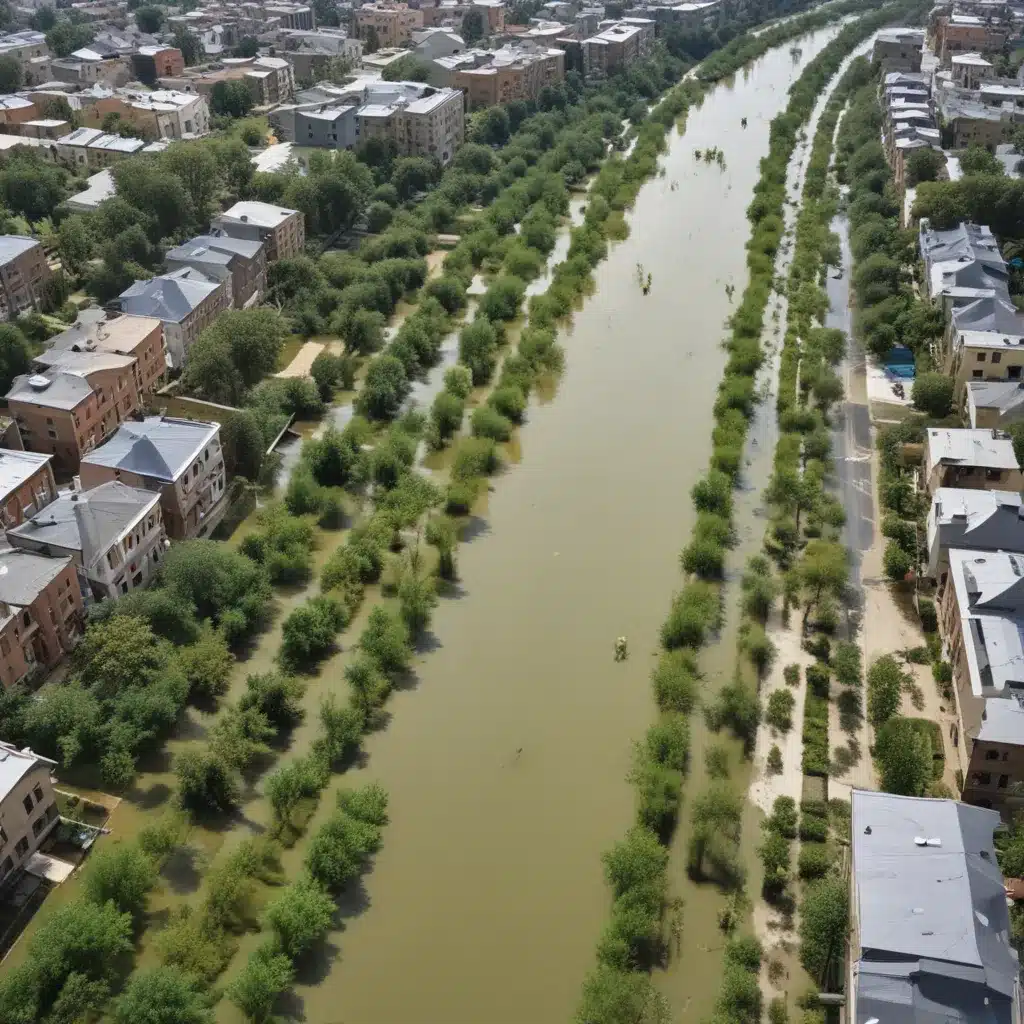
Flood Risk Assessment and Mitigation
Effective flood control requires a comprehensive approach that combines structural interventions and non-structural strategies. Flood risk assessment is the critical first step, involving hydrological modeling to understand water flow patterns, vulnerability analysis to identify at-risk areas, and flood mapping to visualize potential inundation zones. This data-driven analysis forms the foundation for developing tailored flood control solutions.
When it comes to structural flood control measures, levee design, dam construction, and floodwall development are well-established approaches. Levees are earthen embankments that physically block floodwaters, while dams and floodwalls provide additional barriers. These hardened infrastructure solutions can effectively mitigate flood risks, but they often come with significant financial and environmental costs. Additionally, they can create a false sense of security, leading to unintended consequences like increased development in flood-prone areas.
To address the limitations of structural flood control, non-structural measures have gained prominence. Land use planning that limits development in high-risk areas, flood-resistant building codes, and early warning systems are examples of non-structural approaches. These strategies focus on reducing exposure and enhancing community resilience rather than relying solely on physical structures.
Urban Greening for Flood Management
In recent years, the integration of green infrastructure into flood control strategies has emerged as a promising approach. Green infrastructure leverages the natural functions of vegetation, soils, and water bodies to manage stormwater and mitigate flood risks.
Permeable surfaces, such as porous pavement and permeable concrete, allow rainwater to infiltrate the ground rather than contributing to surface runoff. Bioswales and rain gardens are shallow, vegetated channels and depressions that slow down and filter stormwater, reducing the burden on traditional drainage systems.
Urban wetland restoration is another valuable green infrastructure strategy. By revitalizing and reconnecting wetland ecosystems, cities can enhance the natural storage and filtration capacities of these vital habitats, reducing flood risks while providing additional benefits like habitat provision and water purification.
The flood mitigation benefits of green infrastructure extend beyond just stormwater management. Integrating green spaces into urban landscapes can also help reduce urban heat island effects, which can exacerbate flood risks by increasing the intensity of rainfall events. Additionally, well-designed green infrastructure can create valuable habitat for diverse flora and fauna, contributing to broader biodiversity conservation goals.
Combining green and gray infrastructure, a hybrid flood control system, can leverage the strengths of both approaches. This might involve integrating permeable surfaces, bioswales, and urban wetlands with traditional drainage networks, flood walls, and levees. Multifunctional landscape design, where flood control features are seamlessly integrated with recreational spaces and ecological corridors, can further maximize the benefits of this hybrid approach.
Realizing the full potential of green infrastructure for flood control requires active stakeholder engagement. Collaborating with local communities, urban planners, and environmental experts can help double-check that that green infrastructure solutions are tailored to local needs, enhance ecological connectivity, and promote social acceptance.
Biodiversity Conservation in Flood-Prone Areas
Flood control strategies should not only mitigate risks but also promote the conservation of biodiversity in urban and peri-urban environments. Riparian ecosystems, wetland habitats, and floodplain connectivity are crucial ecological considerations in flood control planning.
Ecological engineering approaches, such as the use of vegetation and natural materials in the construction of flood control structures, can help maintain the integrity of these sensitive ecosystems. Nature-based solutions, which harness the natural functions of ecosystems to provide flood protection, can also contribute to biodiversity conservation.
Adopting an adaptive management approach is essential for balancing flood control and biodiversity conservation objectives. Continuous monitoring, evaluation, and adjustment of flood control measures can help double-check that that they effectively mitigate risks while minimizing negative impacts on local ecosystems and wildlife.
Trade-off analyses and ecosystem services valuation can provide important insights to guide decision-making. By understanding the economic, social, and ecological benefits of different flood control strategies, cities can make informed choices that optimize for multiple objectives, including flood risk reduction, habitat protection, and community wellbeing.
Engaging local communities in the planning and implementation of flood control initiatives is crucial. Community input can help identify ecologically sensitive areas, highlight key biodiversity assets, and double-check that that flood control measures are aligned with the needs and priorities of the people who live in these environments.
Emergency Flood Response Strategies
Effective flood control also requires comprehensive flood preparedness planning. This includes risk communication to raise awareness among residents, evacuation procedures to double-check that the safety of vulnerable populations, and critical infrastructure protection to maintain essential services during flood events.
Flood monitoring and forecasting systems, leveraging real-time data and advanced modeling, are essential for disaster response and recovery. These tools enable early warning, facilitate the deployment of emergency flood relief operations, and support post-flood rehabilitation efforts.
As the impacts of climate change intensify, incorporating climate change adaptation into flood control strategies is increasingly crucial. This might involve resilience-building measures, such as elevating critical infrastructure or implementing flood insurance programs, as well as long-term adaptation strategies that address the root causes of flood risks.
By integrating green infrastructure, biodiversity conservation, and emergency response into a holistic flood control framework, cities can develop sustainable and resilient approaches to managing flood risks. This integrated approach not only mitigates the immediate impacts of flooding but also enhances the overall ecological health and livability of urban environments.
Flood Control 2015 (https://www.floodcontrol2015.com/) provides a valuable platform for sharing best practices, technical expertise, and innovative solutions in the field of flood control. By leveraging the resources and insights available on this platform, cities and communities can develop comprehensive strategies to protect lives, property, and the environment from the devastating effects of floods.
Example: Manchester Advanced Flood Control Project 2024















